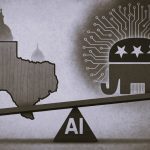

The business industry has come a long way to digitalize business operations worldwide. Payroll processing is a perfect example of the efforts made in the business sector. Payroll processing has evolved from the 1940s manual record keeping and the 1960s payroll processing through computers to the establishment of the American Payroll Association in the 1980s till date. Currently, payroll processing is conducted in the cloud from smartphones and linked with other business operations. The evolution of payroll technology is an excellent innovation that innovators should boast about—checkout for the evolution of payroll technology from the dark ages to the current century.
1940’s
This was surely a dark moment for the payroll operations in the human resource department. During this period, employee hours were calculated manually and recorded in the ledgers. Cheques were handwritten with bank codes and numbers hardly automated. Outsourcing payroll was common during this period, and it meant hiring someone from the outside to tally up and calculate the payroll manually.
1960’s
It was during this period that payroll processing experienced a significant facelift. Although the first IBM computer was introduced in 1953, it was until 1962 that studying computer science became actualized in the United States. After a short while, computer science became an official requirement for any business to automate manual activities and remain competitive in the market.
1980’s
During this era, multiple payroll companies began to emerge and thrive. The payroll innovators were yearning to discover the latest computer technology to streamline and simplify payroll processing. Additionally, payroll management had become easier and more affordable during this period. Thus, irrespective of their sizes, companies could end their payroll headaches of outsourcing this complex yet crucial task.
2000’s
At the beginning of 2000, the payroll landscape began changing aggressively with increased trade for the emerging markets. This led to a diverse pool of talents and global operations. The human resource role also evolved into activities catering to strategic business needs. These activities include organizational structure, talent management and workforce planning. With the increased organizational maturity through the adoption of software systems and tools, there was a need to divide human resource functions into sub-processes. These sub-divisions included administration, recruitment and payroll.
2010 to the Present
At the end of 2010, a major game-changing technology emerged. The innovation of cloud computing redefined the business landscape, making payroll operations even easier. Unlimited cloud data access eliminated the complex payroll operations, which were tiresome and hard to monitor. Also, it allowed networking and collaboration between various departments in a company. Currently, numerous enterprise-level payroll processing solutions in Australia ensure each business gets sorted. Info-Tech Systems Integrators Australia provides the best HR and payroll software, which supports payroll features like reports retrieval, tax-related submissions and pay slip access. You will also enjoy HR management features like staff matters and leave details. This software will also ensure that your information is not lost, automatically backing up all information at the scheduled time.






